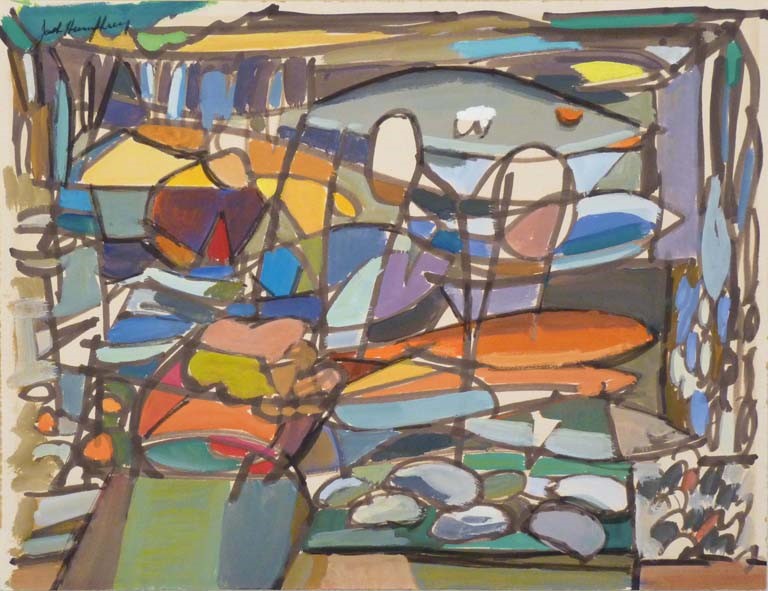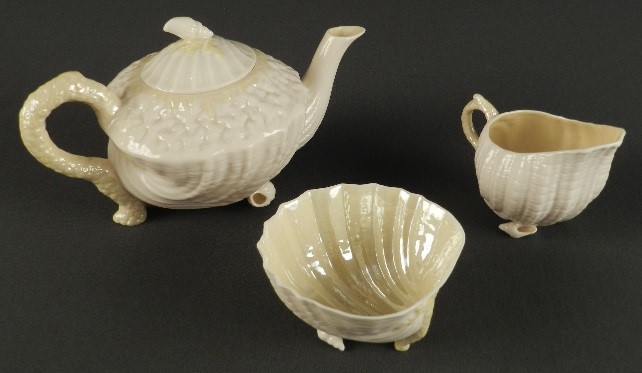As New Brunswick’s provincial museum, the New Brunswick Museum partners with institutions and communities to collect, preserve, research and interpret material to foster a greater understanding and appreciation of New Brunswick provincially and globally. One such initiative is the Cabinets of Wonder exhibition at the Owens Art Gallery, Sackville, NB where a selection of the New Brunswick Museum’s collection of fine art, decorative art and scientific specimens complementing the exhibits from Mount Allison University’s collection are featured until 29 November 2015. The exhibition brings together art and science under common themes to showcase the fascinating relationships between these two disciplines.
Peter Larocque, NBM Curator of New Brunswick Cultural History and Art, curated the New Brunswick Museum display for Cabinets of Wonder. “The inspiration for the Cabinet of Wonder of the New Brunswick Museum comes from a small Jack Weldon Humphrey gouache painting, Crustaceans in the collection of the New Brunswick Museum”, said Peter Larocque. “Modest in its approach to abstraction, its shapes and colours suggest the creatures – crustaceans as well as molluscs – that are resident in the myriad niches found along the shoreline boundaries of Humphrey’s maritime painting places. Traditionally, within the conventions of various systems of symbolism, the attributes of tenacity, protection, fertility and resurrections are associated with the aquatic animals represented. One might argue that these traits also form a construct for considering museums themselves as well as the expectations inherent in their primary purposes – preservation, presentation and interpretation. The rationale for this tableau, then, is the relationship between the diversity of the artifacts and specimens found in the New Brunswick Museum collections and the institution’s role as a repository of material information, a maker of culture and as a place for the exchange of ideas.”

Jack Weldon Humphrey (Canadian, 1901-1967)
Crustaceans, 1952‑1953
brush and black ink with gouache on wove paper
support: 24.9 x 32.4 cm
Gift of Lawren Phillips Harris, 1987 (1987.21)
“The selection of objects for this cabinet speaks to the enduring part that the natural world plays as inspiration for styles and fashions in the fine and decorative arts”, said Peter Larocque. “The variety of ways that this is demonstrated is vast; objects might imitate natural forms, actual creatures (or sections of them) may be incorporated into an artifact, or natural items can be transformed by human agency.”

Belleek Pottery Company (Irish, founded in 1858)
Neptune pattern Tea Service, 1955‑1965
Porcelain
Overall: 14.5 x 22.5 cm [teapot], 6 x 10 cm (sugar bowl), 8.2 x 11.5 cm (creamer)
Gift of Frances Meltzer Geltman, 1995 (1995.46.4.1-3)
The above tea service is indicative of the ongoing fascination with natural forms and technical virtuosity. The pattern of these pieces, Neptune, reminds the viewer of classical mythology and a close association with the sea.

NBMG 3636
Phylum Mollusca, Class Cephalopoda
‘ammonite’
Overall: 13 x 12.4 x 4 cm
Location unknown
Donor and date unknown
From the collection of the Natural History Society of New Brunswick
The coiled shells of fossil ammonites are common in rocks of Jurassic and Cretaceous age. New Brunswick has few fossils from this part of geologic time, but the New Brunswick Museum collection has a few ammonite specimens, mostly donated by members of the Natural History Society of New Brunswick in the 19th century.
“Some items were chosen for their aesthetic value; others for the contemplation of their function”, he said. “In total, these specimens and objects are brought together as a record of the passage of time. They reflect the evidence of past millennia, reference classical mythology and are signposts of our conspicuous use of natural resources. This evocative combination of items calls attention not only to their innate allure but also to their fragility. Implied in this gathering is the location necessary for the enjoyment of close inspection and observation. What better way to envision the role of the museum?”

Maker Unknown (Barbados)
sailor’s valentine, c. 1830‑1880
cedrela wood, paper, cotton batting and glass
25.4 x 49.6 cm
Gift of Frederick G. Godard, (7085)
Produced from the early 19th century and celebrated for their intricacy and sentiment, sailor’s valentines have become synonymous with the separation and uncertainty that characterize seafaring life. Produced in the West Indies, particularly Barbados, these souvenirs were purchased by sailors passing through as conspicuous signs of affection for sweethearts and cherished family members.

Mrs. Lolar (Passamaquoddy)
Sea Urchin pattern basket, c. 1908
dyed and woven ash splints with sweetgrass
overall: 9 x 21 x 21 cm
Gift of Mrs. H.R. Wilson, 1909 (5197.2)
Composed of the finest splints of ash and twining plaits of sweetgrass, this basket reflects the Passamaquoddy First Nation’s intimate knowledge of sea life in their traditional territory along the northern coast of the Bay of Fundy. It is based on the shape of abundant green sea urchin whose habitat includes the intertidal zone of the rocky shoreline.

Maker Unknown (Japanese)
Presentation Gift to Commemorate a Contribution to the Building of a New Church, Umikami County, Chiba Province, Japan, before 23 November 1925
Carved shell
overall: 19 x 22 x 2 cm
The Loretta L. Shaw Collection, 1939 (32622)
The surface of this shell lends itself to artistic expression. The natural shape of the shell is respected and enhanced with the addition of koi subtly carved into the lustrous bands of nacre. The combination of imagery and material denote perseverance and strength – appropriate as a gift to a Canadian missionary intent on bringing Western-style education to Japan.
